Capturing the beauty of everyday life — of the “mundane” — is, to me, travel photography. Your life is full of stories that are travel to someone else, no matter where you live. You don’t need a fancy camera or plane ticket to photograph your surroundings with purpose and emotion. You can open understanding and break down cross-cultural boundaries by providing a photographic window from your own backyard.
All photos by the author.
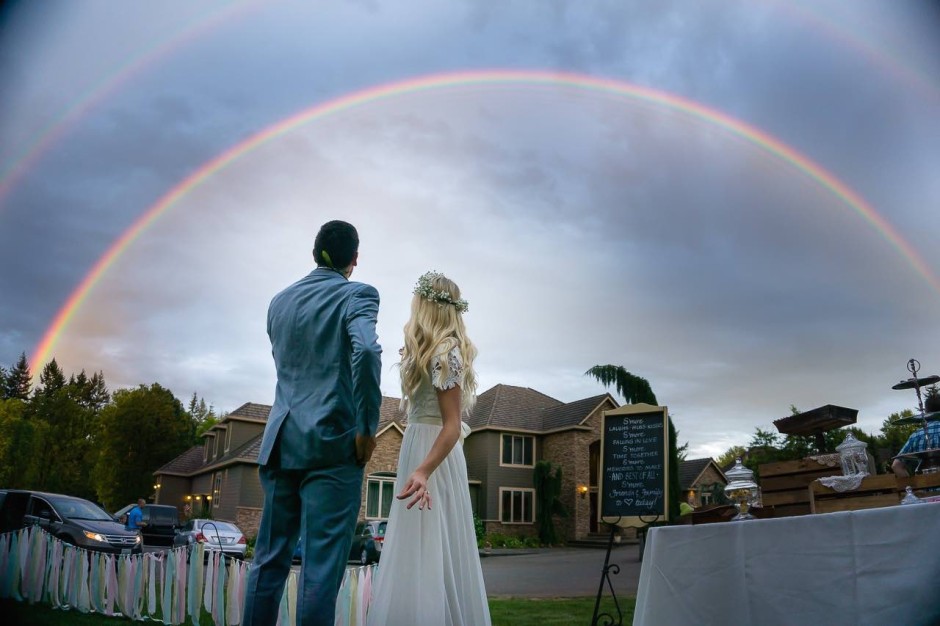
First, think of yourself as a storyteller, then a photographer.
Renowned travel photographer Oded Wagenstein is a masterful visual storyteller. He suggests trying to capture an emotional story in one photograph. This image of a bride and groom has several storytelling elements to it: the double rainbow, the "s'more" sign, the bride's ring hand, the way the couple are turned towards one another and their gaze toward the rainbow. Work on being a storyteller, your technical and editing skills will come with time and practice.

Light is everything.
Learn light and you will become an everyday storyteller. In the past, I thought I understood light because I had learned the technical abilities inside my camera, yet I neglected my lighting conditions on the outside. Look for beautiful light, then worry about your subject. As humans we are drawn to light; use that in your emotional storytelling. As seen, a mother and son’s relationship is highlighted through handholding and first morning light.
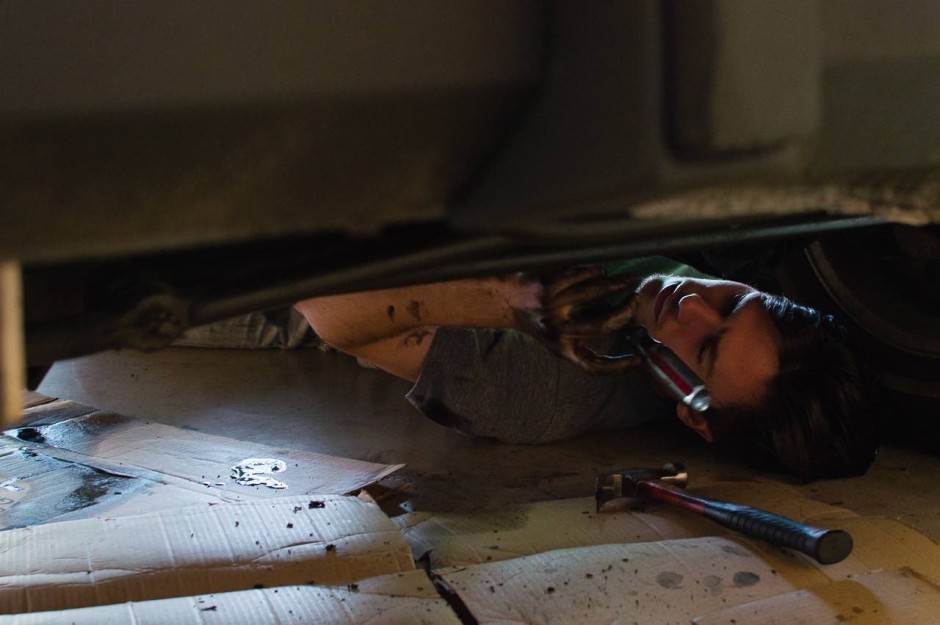
Different angles add impact.
Activity happens near the ground, in the sky, in line of sight. Movement is everywhere. Do not limit yourself - move your feet and body to gain a new perspective. In the following photo, I had to lay upon grease-stained cardboard boxes to photograph my son fixing his jeep. The mix of shadow and light falling on his face, coupled with the angle, adds impact to the moment.
Intermission
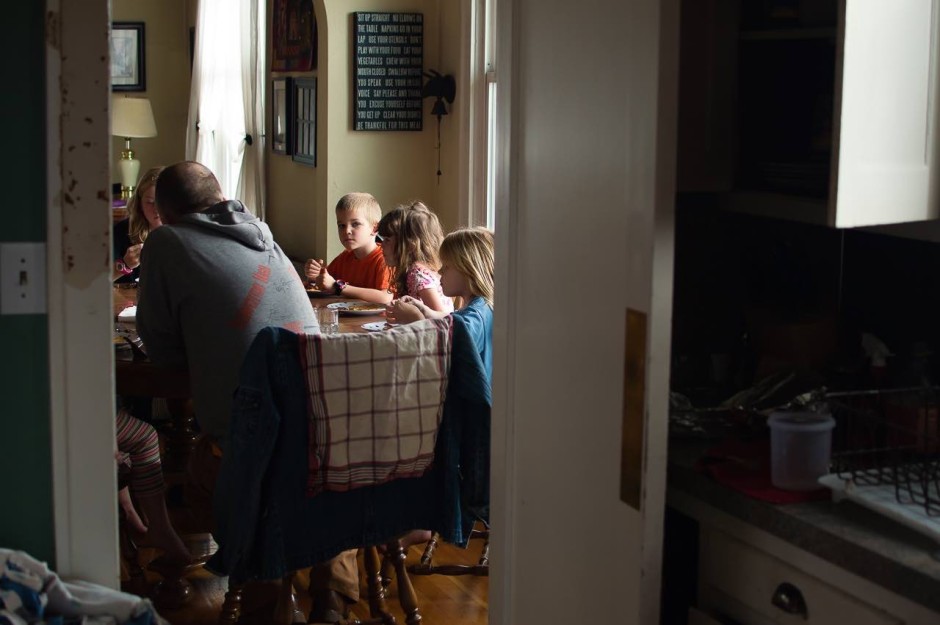
Quietly blend with patience.
This family has four girls and one boy and live in an old farmhouse. While photographing them eating breakfast, I snuck into the kitchen and waited quietly. I was rewarded when the boy turned to look at me while the rest of family was engaged in eating. I love how the "manners sign" sits above his head, making the unplanned moment more of a story. Quietly blend until they almost forget about you.
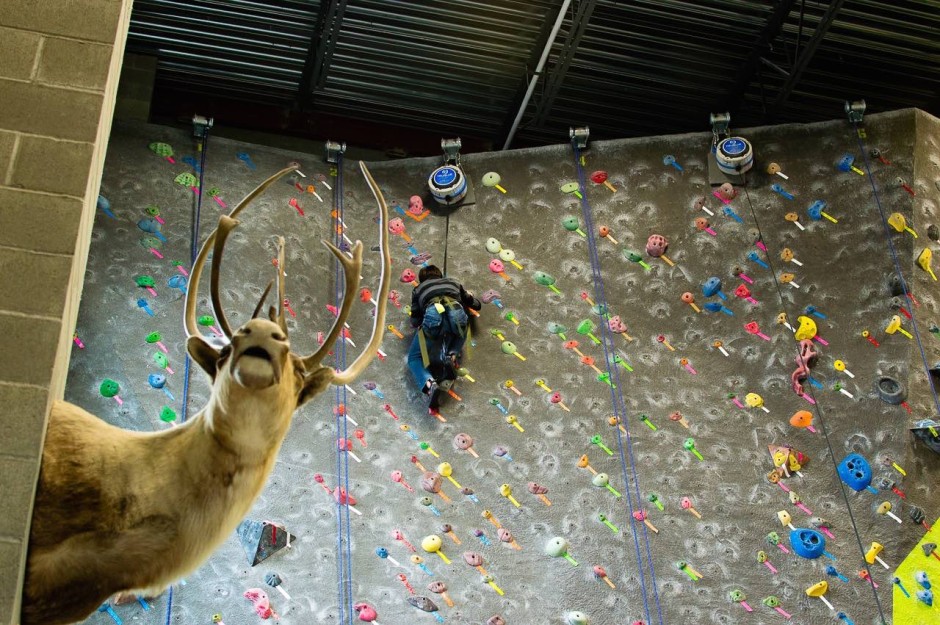
Watch for contradiction.
Contradiction in subject can be humorous, size difference, color, anything unexpected. When photographing candid moments contradiction happens all the time. Watch for it and have fun.
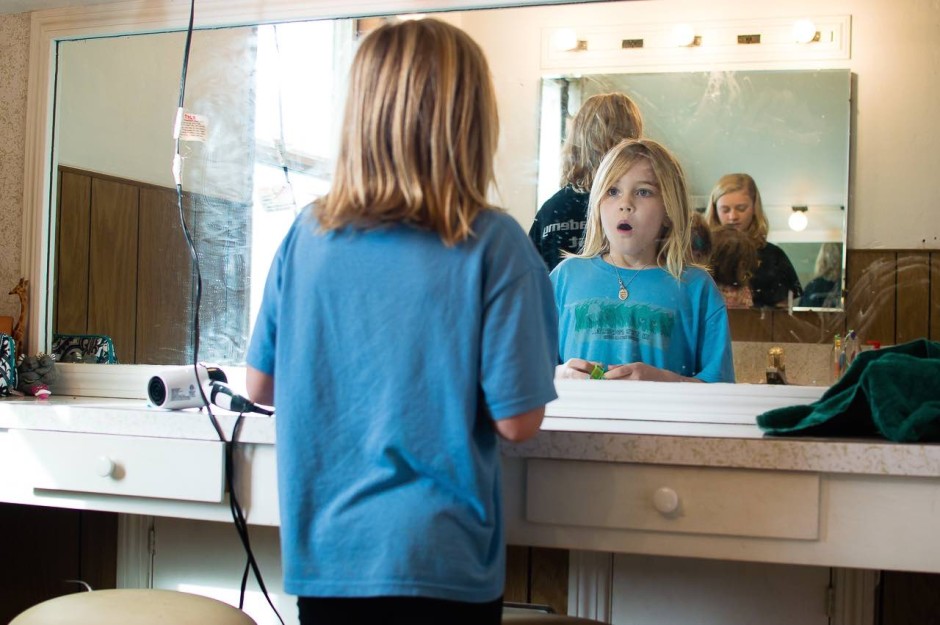
Look and listen for simple, individual moments.
There are mini stories happening around us everyday. When photographing a larger story, such as a baseball game, festival, or even a family, focus on the overall event, but also look for simple, individual moments. The preteen girl in this photograph was making faces at herself while her older sister was brushing the teeth of a sibling. Look and listen.
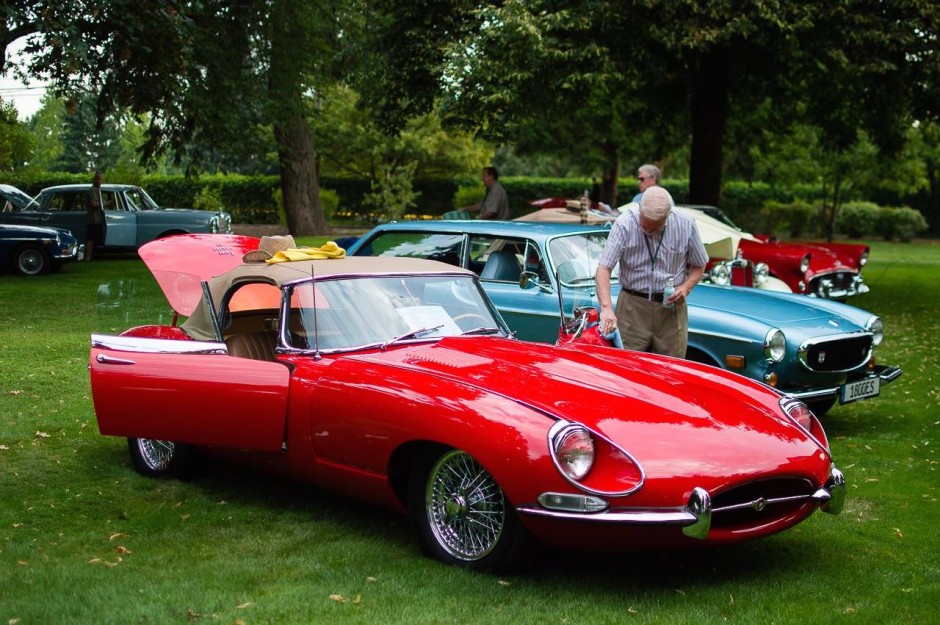
No posing; use only candid, unscripted moments.
People's natural reaction to their picture being taken is to pose. Tell your subject you do not want them to pose. Recently I stumbled upon a car show and asked if I could take photographs. At first this gentleman tried to pose, but I asked him to continue with polishing his car, which provided a more candid photo opportunity.
Intermission
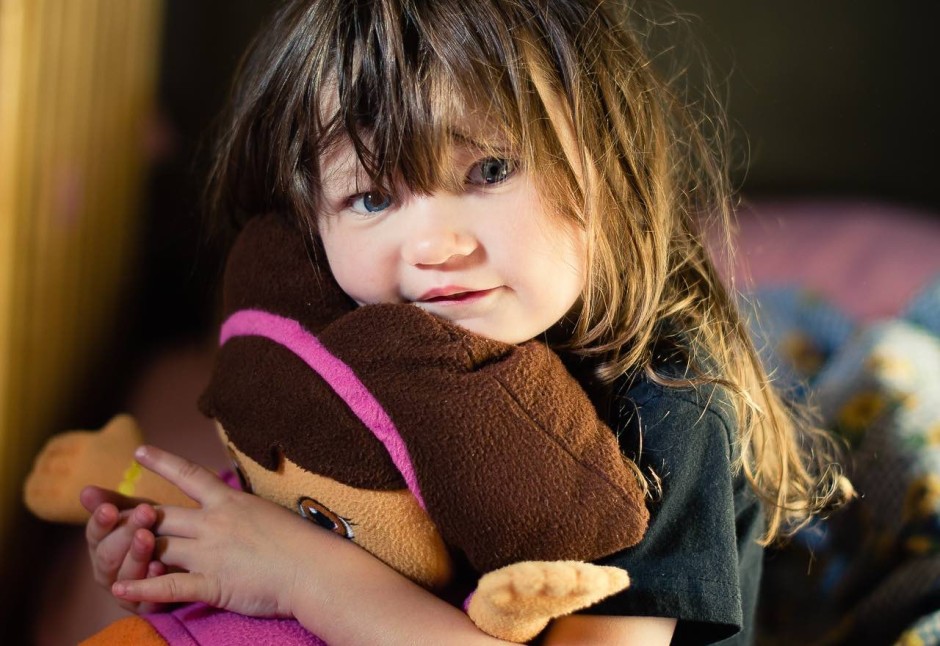
If you need better light or angles, you move.
When capturing candid moments, I rarely ask the people I'm photographing to move. I want them involved in what they are doing. If I need a better angle or light, I move. It can be challenging, but it will bring a different dimension and depth to your work. In this image, this little girl had just woken up and I wanted to capture her in a relaxed and curious state. Therefore, I did not ask her to move; I moved to where I could capture beautiful lighting on her face, and her gaze followed me.
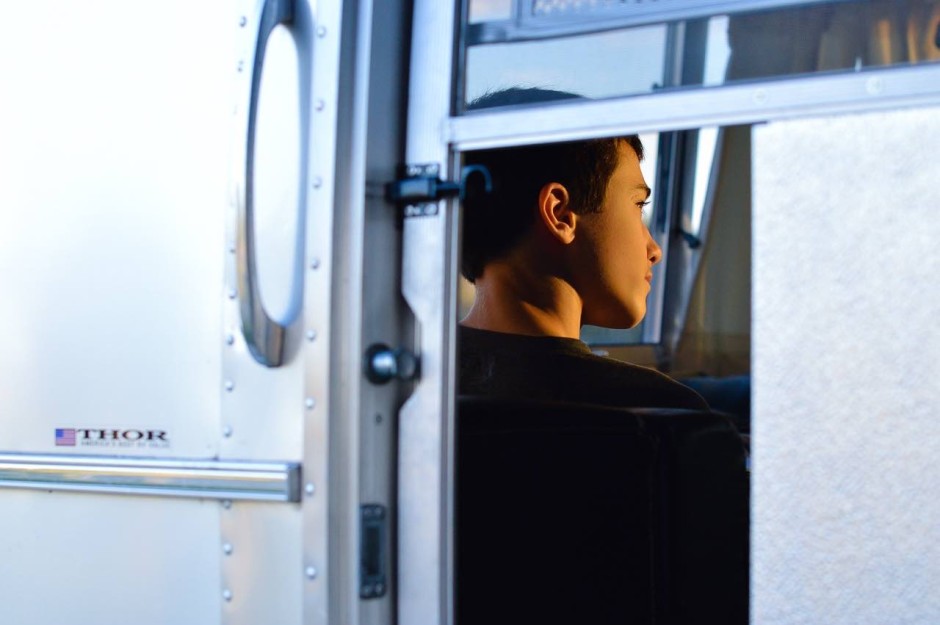
Use natural frames.
Natural frames add depth and dimension to visual storytelling. When used properly, the eye is immediately drawn to the framed subject. In this photograph, we are weekend camping in a friend’s Airstream. My son rests for a time and the afternoon light streams on his face through an opposite window. Standing outside, I capture the moment through the door frame.

Layer your shots.
Everyday stories are full of layers, as seen in this scene of the early morning setup of the Portland, Oregon Saturday Market. The man in black relaxed and watching, the empty artisan booths, and the people walking on the sidewalk create a layered scene. There are a couple of ways to photograph it: Set your camera to have a deep depth of field and capture an entire scene, or photograph through something. Focus on a single background point, such as someone standing at the back of a group.
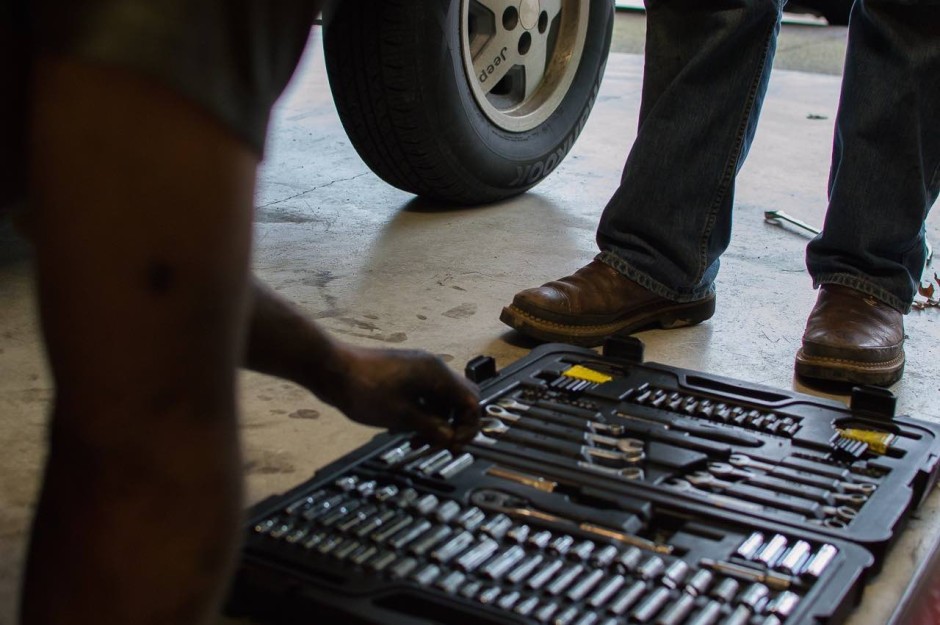
Focus on the details.
Photographing details of a scene are like toppings on a hot fudge sundae. The overall subject matter is the ice cream, however, you have the wonder of the hot fudge, whipped cream, or the banana. The details add to the story of the sundae. This is a photograph of my son fixing his first jeep. He had recruited his best friend and they spent days on it. The jeep tire, boots, tools and dirty hands tell a detail story.
